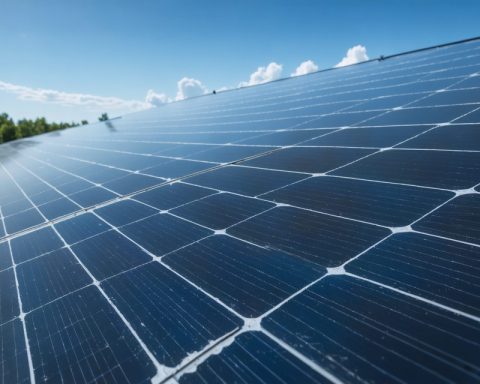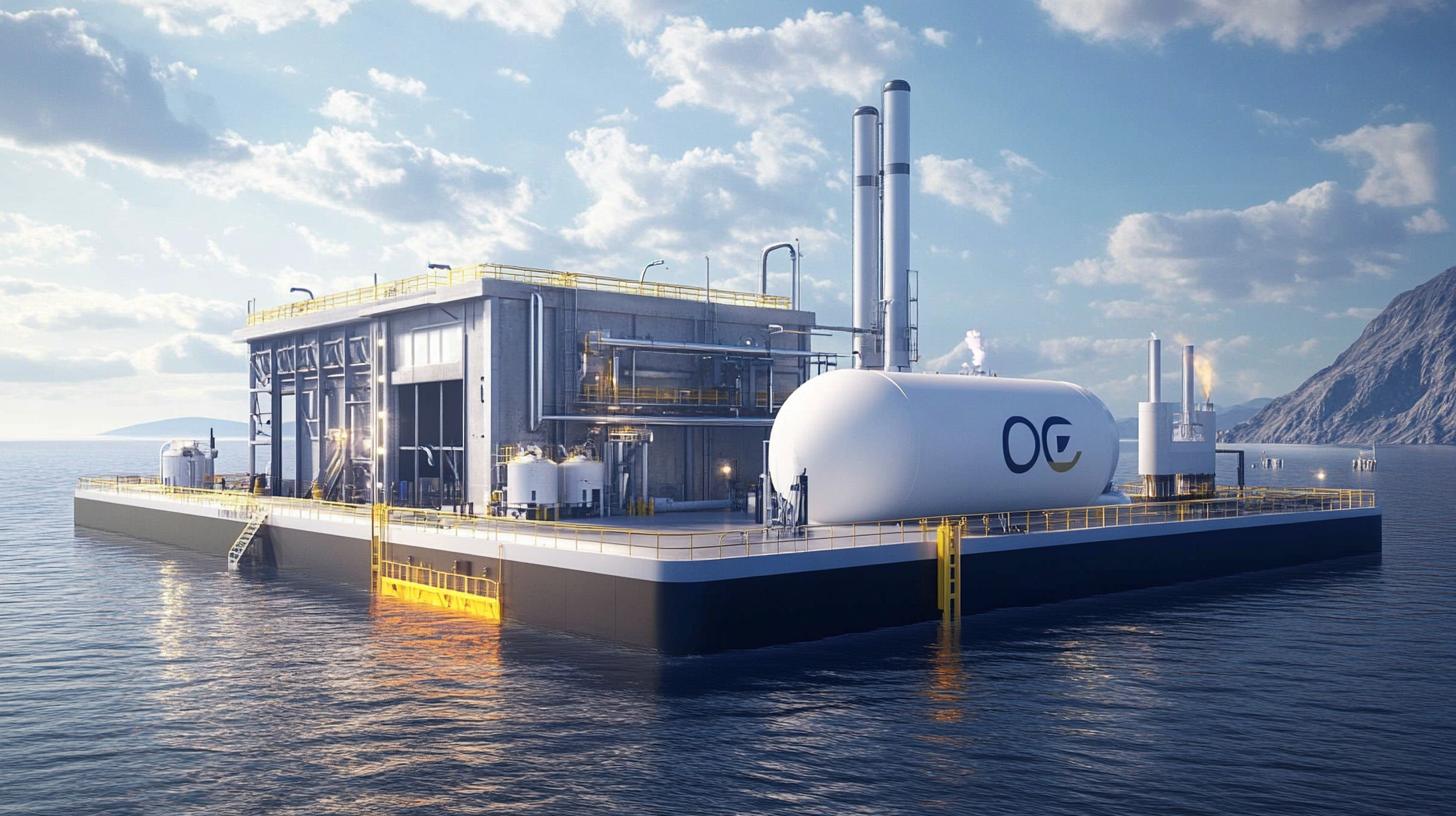- Floating solar farms are revolutionizing clean energy in Southeast Asia by harnessing water surfaces to generate electricity.
- These solar arrays maximize efficiency and sustainability by utilizing cooler water temperatures, which enhance solar panel performance and lifespan.
- In Vietnam and Thailand, large-scale projects like the Da Mi and Sirindhorn Dam projects demonstrate floating solar’s potential to boost renewable energy production while preserving land use.
- Floating solar infrastructure also provides environmental benefits, such as reducing water evaporation and enhancing water quality.
- Globally, floating solar is emerging as a viable solution to address climate change by transforming water bodies into renewable energy hubs.
https://youtube.com/watch?v=P-qop_FMUNQ
Brilliant panels shimmer across calm waters, transforming sunlight into electricity while gracefully drifting on Southeast Asia’s bountiful reservoirs and lakes. These floating solar farms, a rapidly advancing clean energy technology, are captivating the region with their innovative potential and environmental benefits.
Envision vast stretches of photovoltaic panels reflecting the golden hues of the sun as they gently float on the shimmering surface of a lake. This is the transformative scene unfolding in places like Vietnam and Thailand, where land scarcity and power demand create unique energy challenges. Floating solar technology rises to these challenges, turning water bodies into sustainable powerhouses.
Why Floating Solar?
Traditional land-based solar farms consume valuable real estate, posing environmental concerns and competing with agricultural or residential priorities. Southeast Asia’s landscapes, rich in water resources yet limited in available land, demand a different solution. Floating solar arrays utilize bodies of water, such as hydroelectric reservoirs, to generate energy without infringing on land use.
This approach carries a distinct advantage: cooler temperatures on water surfaces increase solar panel efficiency, enhancing energy output. Moreover, the water beneath helps cool the panels, prolonging their lifespan and improving their performance—a win-win for sustainability.
Local Success Stories
In the heart of Vietnam, the Da Mi floating solar project symbolizes this green evolution. Spanning 47 hectares, it produces 47.5 MWp, powering thousands of homes while coexisting harmoniously with its aquatic environment. Similarly, in Thailand, the world’s largest hybrid solar-hydroelectric project thrives on the Sirindhorn Dam, projected by the Thai government to significantly boost the country’s renewable energy output.
These initiatives do more than just produce clean energy. They mitigate water evaporation, preserve water quality by reducing algae growth, and unlock new economic opportunities, propelling local communities forward, aligned with the economic goals of the region.
Global Implications and Our Future
As the climate crisis escalates and the demand for renewable energy surges, floating solar positions itself as a compelling solution. With Southeast Asia leading by example, other regions are inspired, potentially transforming millions of hectares of global water surfaces into solar energy hubs.
The Key Takeaway
Floating solar farms illuminate the path to a sustainable energy future by turning vast water bodies into renewable power sources without sacrificing land. Southeast Asia, with its resourceful innovation, showcases how technology can blend seamlessly with nature to address modern energy needs, marking a pivotal chapter in the global clean energy narrative.
Witnessing their success, one cannot help but imagine a world where every lake and reservoir shimmers not just with sunlight, but with possibility and hope for a cleaner, brighter future.
The Future of Floating Solar: Transforming Water Bodies into Renewable Energy Hubs
Exploring the Potential of Floating Solar Farms
Floating solar farms elegantly harness the power of the sun, leveraging underutilized water surfaces like reservoirs and lakes to generate clean energy. In places like Southeast Asia, where land is at a premium, these innovations are crucial for meeting energy demands without infringing on agricultural or residential areas. By understanding the multifaceted benefits and challenges of floating solar systems, we can better appreciate their growing importance on the global energy stage.
How Floating Solar Technology Works
Floating solar power plants involve arrays of photovoltaic panels anchored onto floatation devices. These platforms are designed to withstand various weather conditions and are anchored to the lakebed to prevent drifting. The electrical output is transmitted to the shore via underwater cables, integrated with local power grids.
Advantages of Floating Solar Systems
1. Increased Efficiency: The cooling effect of water beneath these panels can significantly boost their efficiency compared to traditional land-based systems. Cooler environments help manage photovoltaic heat levels, maintaining optimal performance.
2. Land Conservation: By utilizing water surfaces, floating solar mitigates land use conflicts, preserving landscapes for agriculture, conservation, or development.
3. Environmental Enhancements: In addition to reducing water evaporation, floating solar setups can help moderate algae growth, maintaining water quality for local ecosystems.
4. Economic Opportunities: Such projects bring jobs in installation and maintenance, promoting economic vitality in rural communities while contributing to national energy independence.
Challenges and Considerations
1. Initial Costs and Investments: Floating solar installations can be costlier than terrestrial counterparts due to advanced floatation systems and underwater electrical design.
2. Environmental Impact Assessments: Comprehensive assessments are necessary to avoid disrupting aquatic ecosystems, ensuring projects are environmentally sound and sustainable.
3. Technical Challenges: The engineering involved in anchoring and connecting these systems requires specialized expertise to prevent damage from water movement or extreme weather.
Market Trends and Industry Forecasts
Floating solar is expected to grow rapidly, with markets expanding beyond Southeast Asia to Western countries and regions like Africa and the Middle East. This growth is driven by increasing energy demands, advancements in photovoltaic technology, and global sustainability commitments.
According to the International Energy Agency (IEA), floating solar could potentially generate terawatts of power, offering immense capacity growth for countries with water-rich geographies.
Practical Life Hacks
– Homeowners and Businesses: Invest in solar energy through community solar initiatives; some municipalities provide floating solar shares if your property isn’t directly feasible for solar installations.
– Policy Makers: Encourage research and development in floating solar technologies, offering incentives for companies to invest in this field.
– Environmental Advocates: Partner with solar companies to conduct studies on long-term environmental impacts, sharing data with stakeholders to drive informed decisions.
Key Questions Answered
– How are floating solar panels different from traditional ones? They are designed for durability on water and often feature enhanced cooling due to their aquatic location, which can increase efficiency.
– Can floating solar plants damage marine life? Proper placement and environmental assessments minimize impacts, ensuring projects are beneficial rather than destructive.
– What regions are leading in floating solar adoption? Southeast Asia is a frontrunner, with burgeoning interest in Europe and North America due to successful regional projects and governmental support.
Actionable Recommendations
– Advocate for floating solar incentives and policy support to kickstart local projects.
– Promote awareness and educational programs on renewable energy benefits.
– Businesses should explore partnerships with solar companies for potential investment in energy savings.
Discover more about sustainable energy initiatives at International Energy Agency.
As the world seeks cleaner and more sustainable energy solutions, floating solar farms stand out as a transformative leap. They not only capitalize on underutilized resources but also pave the way for a future where renewable energy is universally accessible, supporting both environmental and economic growth.

















